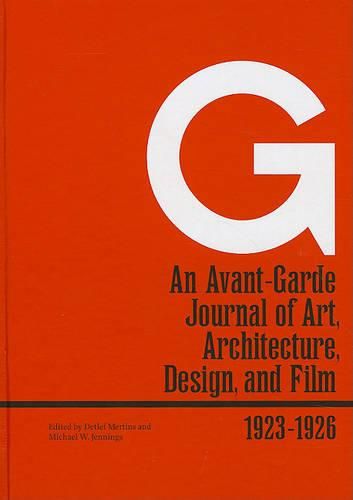Readings Newsletter
Become a Readings Member to make your shopping experience even easier.
Sign in or sign up for free!
You’re not far away from qualifying for FREE standard shipping within Australia
You’ve qualified for FREE standard shipping within Australia
The cart is loading…






First published in 1923, the journal G: Material zur Elementaren Gestaltung (G: Materials for Elemental Form-Creation) helped shape a new phase in the history of the European avant-garde. Founded by Hans Richter, a pioneer of abstract animated film, G featured works by some of the important names in the advanced cultures of Europe: Hans Arp, Walter Benjamin, Theo van Doesburg, Viking Eggeling, Naum Gabo, Werner Graeff, George Grosz, Hugo Haring, Raoul Hausmann, Ludwig Hilberseimer, Frederick Kiesler, El Lissitzky, Ludwig Mies van der Rohe, Antoine Pevsner, Man Ray, and Tristan Tzara.
This edition, the first in English translation, preserves the original design by Lissitzky, Richter, and Graeff, and includes essays that explore the role of the journal in its time and in relation to contemporary culture. An introduction analyzes the principles of the journal, situates it in the culture of the early 1920s, and evaluates its achievements.
$9.00 standard shipping within Australia
FREE standard shipping within Australia for orders over $100.00
Express & International shipping calculated at checkout
First published in 1923, the journal G: Material zur Elementaren Gestaltung (G: Materials for Elemental Form-Creation) helped shape a new phase in the history of the European avant-garde. Founded by Hans Richter, a pioneer of abstract animated film, G featured works by some of the important names in the advanced cultures of Europe: Hans Arp, Walter Benjamin, Theo van Doesburg, Viking Eggeling, Naum Gabo, Werner Graeff, George Grosz, Hugo Haring, Raoul Hausmann, Ludwig Hilberseimer, Frederick Kiesler, El Lissitzky, Ludwig Mies van der Rohe, Antoine Pevsner, Man Ray, and Tristan Tzara.
This edition, the first in English translation, preserves the original design by Lissitzky, Richter, and Graeff, and includes essays that explore the role of the journal in its time and in relation to contemporary culture. An introduction analyzes the principles of the journal, situates it in the culture of the early 1920s, and evaluates its achievements.